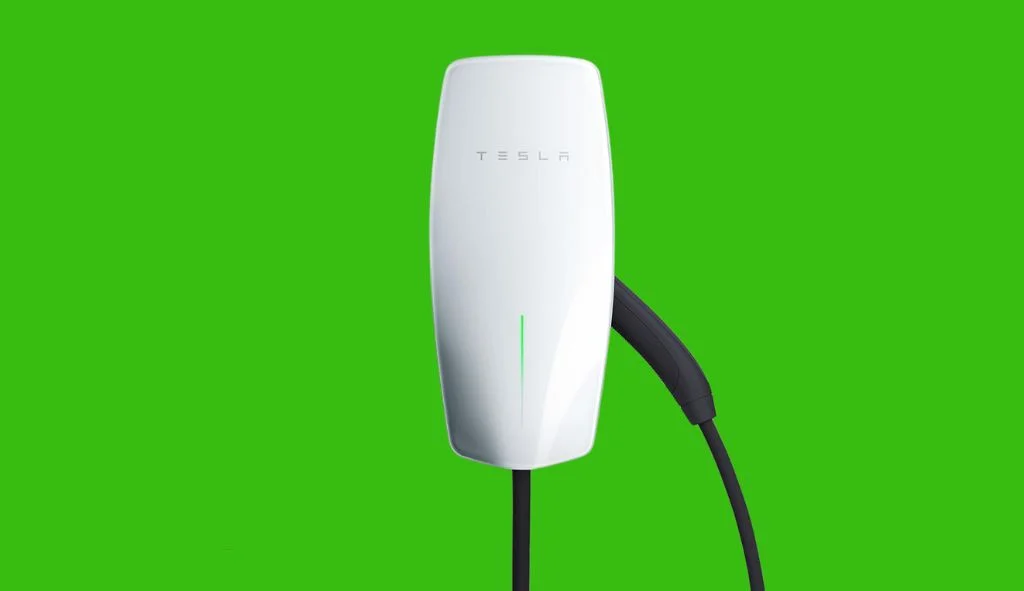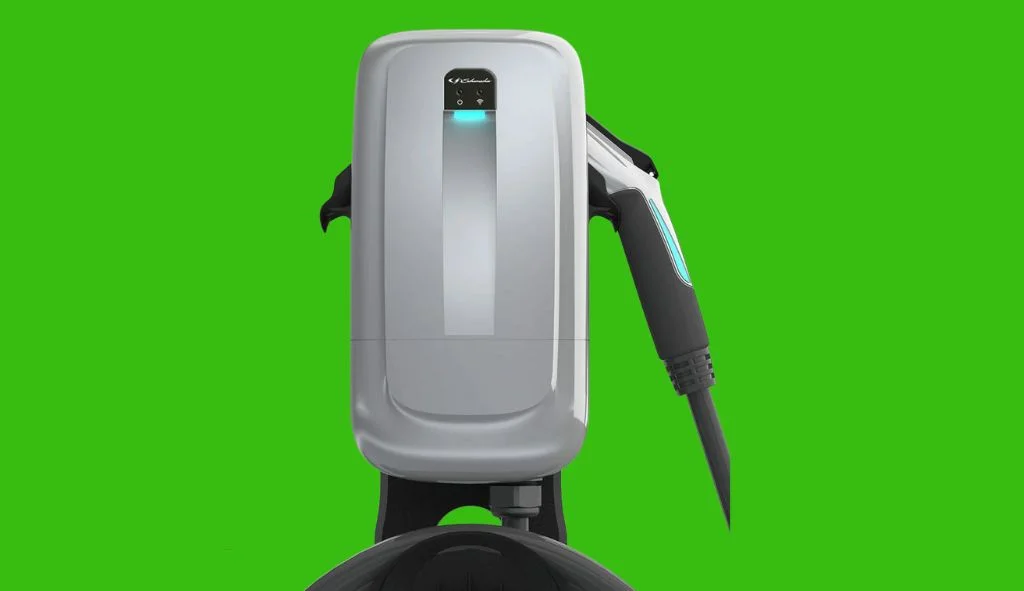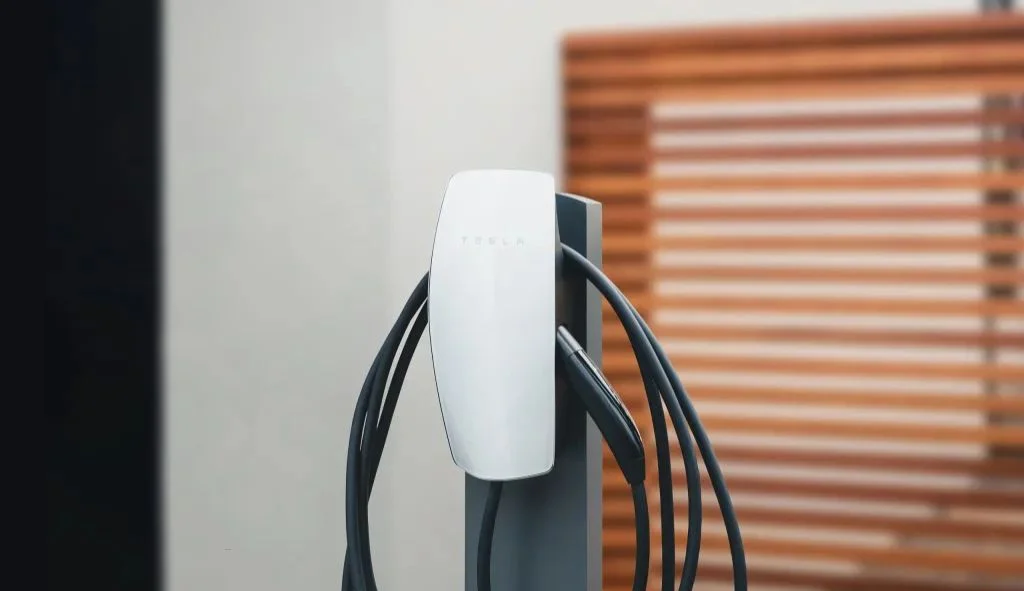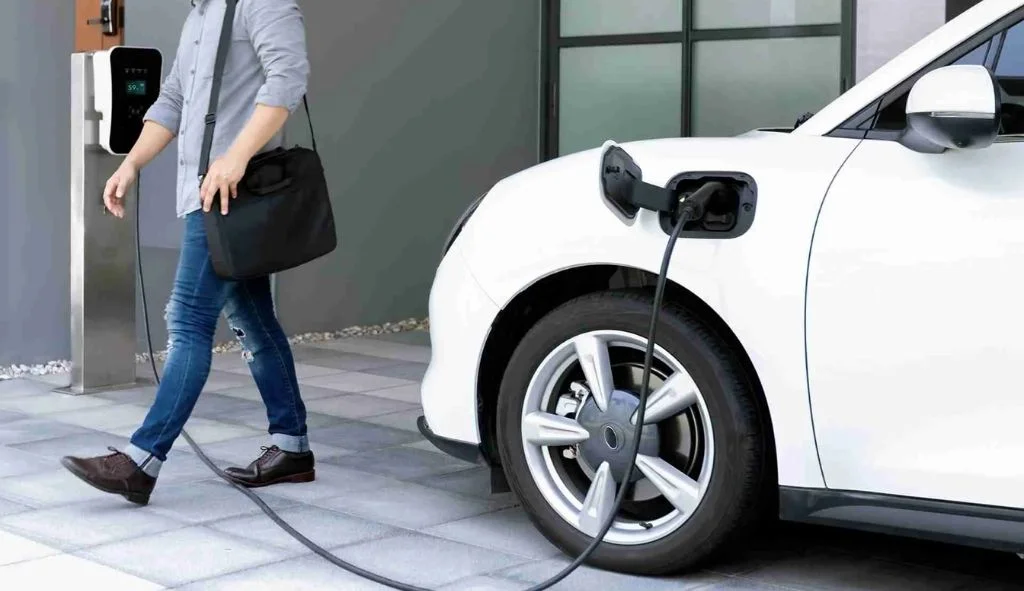The NEMA 14-50 charges Tesla vehicles at around 30 miles per hour using the mobile connector, while the Tesla Wall Charger delivers faster charging at up to 44 miles per hour but costs more.
Understanding the Basics of Tesla Home Charging Options
When you buy a Tesla, one of the first things you need to consider is how you’ll charge it at home. This decision impacts your daily routine, charging costs, and overall convenience. The two most popular options are the NEMA 14-50 outlet and the Tesla Wall Connector, each with distinct features and benefits.
What is a NEMA 14-50 Outlet?
A NEMA 14-50 outlet is a 240-volt power outlet commonly used for electric ranges, RVs, and electric vehicles. This industrial-grade outlet delivers 50 amps of power to your charging setup. When used with a Tesla, the NEMA 14-50 works with the Mobile Connector that may come with your vehicle (though since April 2022, Tesla no longer includes the Mobile Connector as a standard accessory with new purchases).
The NEMA 14-50 setup consists of the wall outlet itself and the Mobile Connector with a NEMA 14-50 adapter. Once installed, you simply plug the Mobile Connector into the outlet, and then connect it to your Tesla to begin charging.
This option has gained popularity among Tesla owners for its simplicity and more affordable installation compared to dedicated charging stations. The outlet itself is relatively inexpensive, though professional installation is still recommended to ensure safety and proper function.
What is a Tesla Wall Connector?
The Tesla Wall Connector is a dedicated home charging station designed specifically for Tesla vehicles. Currently in its third generation, the Wall Connector is a sleek, wall-mounted unit that provides the fastest home charging experience available for Tesla cars.
Unlike the NEMA 14-50 solution, the Wall Connector is hardwired directly into your home’s electrical panel rather than using a plug and outlet system. It features a permanent installation with a fixed charging cable (24 feet in length for the current model) that hangs on the unit when not in use.
The Wall Connector includes features not available with the basic outlet option, including WiFi connectivity for software updates, power adjustment capabilities, and a modern design that complements Tesla vehicles. For homes with multiple Tesla vehicles, the Wall Connector also supports load sharing, allowing up to 16 Wall Connectors to operate on the same circuit through software coordination.
Charging Speed Comparison
One of the most important factors when choosing between a NEMA 14-50 and a Tesla Wall Connector is charging speed. How quickly your Tesla charges impacts your daily routine and charging schedule.
Tesla Wall Connector Charging Rates
The Tesla Wall Connector delivers the fastest home charging available for Tesla vehicles. When properly installed on a 60-amp circuit, it can provide up to 48 amps of continuous power to your vehicle. This translates to approximately:
- 44 miles of range per hour for a Tesla Model 3 Long Range
- Similar high charging rates for Model Y, Model S, and Model X
The Wall Connector’s charging capability scales based on your home’s electrical capacity and the specific model of Tesla you own. For older Model S vehicles, the Wall Connector could even deliver up to 80 amps with the right setup and dual onboard chargers, though newer Tesla models have standardized at a maximum of 48 amps for home charging.
The Gen 3 Wall Connector also allows for power level adjustment, meaning it can be configured to work with lower-amperage circuits if your home’s electrical system can’t support the full 60-amp circuit.
NEMA 14-50 Charging Rates
When using a NEMA 14-50 outlet with the Tesla Mobile Connector, the maximum charging rate is limited to 32 amps (even though the circuit is rated for 50 amps) due to electrical safety standards requiring continuous loads to use only 80% of a circuit’s capacity. This results in:
- Approximately 30 miles of range per hour for most Tesla models
- About 20-29 miles of range per hour, depending on the specific Tesla model and battery size
This charging speed is roughly 25-30% slower than what the Wall Connector can deliver, but it’s still significantly faster than using a standard 120-volt household outlet (which only provides about 3-5 miles of range per hour).
Charging Speed Based on Tesla Model
The actual charging speed you’ll experience depends on your specific Tesla model, as different vehicles have different onboard charger capabilities:
Tesla Model 3 Standard Range: The onboard charger maxes out at 32 amps, meaning both the NEMA 14-50 and Wall Connector will charge at the same rate (around 30 miles per hour). In this case, there’s no charging speed advantage to the Wall Connector.
Tesla Model 3/Y Long Range and Performance: These vehicles can accept up to 48 amps, so they will charge faster with a Wall Connector (44 miles per hour) than with a NEMA 14-50 (30 miles per hour).
Tesla Model S/X: Newer models charge at similar rates to the Model 3/Y Long Range. Some older Model S/X vehicles with dual chargers could charge even faster with a high-amperage Wall Connector setup.
It’s worth noting that these are approximate charging rates and may vary based on your home’s electrical system, the temperature, battery state, and other factors.
Installation Requirements and Considerations
The installation process and requirements differ significantly between these two charging options, which affects both the complexity and cost of setting up your home charging solution.
Tesla Wall Connector Installation Process

Installing a Tesla Wall Connector requires:
- A licensed electrician familiar with EV charging installation
- Running dedicated wiring from your electrical panel to the mounting location
- Hardwiring the connector directly to your electrical system
- Mounting the unit securely on a wall
- Configuring the Wall Connector settings via WiFi
- For outdoor installations, ensuring proper weatherproofing
The Wall Connector is typically installed on a 60-amp circuit breaker, which allows for the maximum 48-amp continuous charging. However, it can be configured for lower amperages if your electrical system can’t support a 60-amp circuit.
The installation process is more complex than for a NEMA 14-50 outlet because the unit must be hardwired and then configured. The Wall Connector also requires a solid WiFi connection for optimal functionality, including firmware updates and remote troubleshooting capabilities.
NEMA 14-50 Installation Process
Installing a NEMA 14-50 outlet involves:
- A licensed electrician (strongly recommended, though some homeowners with electrical experience may DIY)
- Running dedicated wiring from your electrical panel to the outlet location
- Installing a 50-amp circuit breaker in your panel
- Mounting a NEMA 14-50 receptacle in an appropriate box
- Using a high-quality industrial-grade outlet (important to prevent overheating)
This installation is generally simpler than the Wall Connector because it doesn’t require hardwiring or configuration-it’s just installing a new outlet. However, it still requires proper electrical knowledge to ensure safety and code compliance.
Electrical Requirements for Both Options
Both charging solutions have significant electrical requirements that may impact your decision:
Panel Capacity: Both options require substantial electrical capacity in your home’s panel. You’ll need at least 50-60 amps of available capacity, which some older homes may not have without a panel upgrade.
Wiring: The NEMA 14-50 typically uses 6 AWG wire on a 50-amp breaker, while the Wall Connector generally uses 6 AWG or 4 AWG wire on a 60-amp breaker for maximum charging speed.
Location: The distance between your electrical panel and the charging location affects installation costs. Longer runs require more wiring and potentially more complex installation work.
Permits: Most jurisdictions require electrical permits for either installation, adding to the overall time and cost.
A key difference is that the Wall Connector only needs three wires (two hot wires and a ground), while the NEMA 14-50 requires four wires (two hot, neutral, and ground). This might make a difference in some installation scenarios.
Cost Analysis: Upfront and Long-Term
The financial aspect is often a decisive factor when choosing between these charging options.
Initial Investment for Each Option
Tesla Wall Connector:
- Cost of the unit: $475-$550 (as of 2025)
- Optional accessories like customizable faceplates: Additional cost
- J1772 adapter version (for non-Tesla vehicles): Around $550
NEMA 14-50 Setup:
- Cost of a quality NEMA 14-50 receptacle: $50-$100
- Mobile Connector (if not included with your vehicle): Around $230
- NEMA 14-50 adapter for Mobile Connector: Included in Mobile Connector bundle
The hardware cost difference is significant-you’ll spend about $300-$400 more for the Wall Connector compared to just purchasing a NEMA 14-50 outlet (assuming you already have the Mobile Connector).
Installation Costs
Installation costs vary widely based on your location, electrical panel situation, and the complexity of the installation, but here are typical ranges:
Tesla Wall Connector Installation:
- Basic installation: $500-$1,000
- Complex installation (panel upgrades, long wire runs): $1,000-$2,500+
- Total cost including hardware: $1,000-$3,000+
NEMA 14-50 Installation:
- Basic installation: $300-$700
- Complex installation: $700-$1,500+
- Total cost including hardware: $350-$1,600+
On average, installing a NEMA 14-50 outlet costs about 40-50% less than installing a Wall Connector. This cost difference is a major reason many Tesla owners opt for the simpler outlet option.
Long-Term Value Considerations
While the upfront cost favors the NEMA 14-50, there are long-term considerations:
Property Value: Having a Level 2 charging setup of any kind adds value to your property, though a permanently installed Wall Connector might be more attractive to potential buyers who own EVs.
Flexibility: The NEMA 14-50 offers more flexibility if you switch to a non-Tesla EV in the future.
Durability: Wall Connectors are designed for frequent use and outdoor installation, potentially offering better durability than some outlet installations.
Multiple Vehicles: If you have or plan to have multiple Teslas, the Wall Connector’s load-sharing feature could provide better long-term value.
Future-Proofing: Installing a NEMA 14-50 with 6 AWG wire provides the option to upgrade to a Wall Connector later by simply removing the outlet and hardwiring the connector to the same circuit.

Convenience and User Experience
The daily experience of using these charging options differs in several ways that might impact your satisfaction.
Convenience Features of the Tesla Wall Connector
The Wall Connector offers several convenience features:
Permanently Available: The charging cable is always ready and hangs neatly on the unit when not in use.
Longer Cable: The 24-foot cable on the Wall Connector is 4 feet longer than the Mobile Connector’s 20-foot cable, providing more flexibility in parking position.
Smart Features: WiFi connectivity enables remote monitoring, troubleshooting, and automatic firmware updates.
Vehicle Assignment: The connector can be assigned to specific vehicles via VIN, preventing unauthorized use.
Aesthetic Design: The sleek design matches Tesla’s style and offers a clean look with customizable faceplates.
Weather Resistance: Properly installed, the Wall Connector is outdoor-rated and water-resistant, making it more secure for outdoor charging.
Load Sharing: For multi-Tesla households, multiple Wall Connectors can share a single circuit intelligently.
NEMA 14-50 Practical Benefits
The NEMA 14-50 setup has its own practical benefits:
Portability: The Mobile Connector can be unplugged and taken with you for charging elsewhere (though this is also a security concern for outdoor installations).
Versatility: The outlet can be used for other high-power devices like RVs or power tools when not charging your Tesla.
Simplicity: No WiFi configuration or software to manage-it simply works when plugged in.
Universal Compatibility: Works with other EVs that have compatible connectors, making it useful if you have multiple EV brands.
No Redundancy: If you already own the Mobile Connector, you don’t need to purchase additional charging equipment.
Which Option Is More Future-Proof?
When considering future-proofing:
Wall Connector Advantages:
- Firmware updates keep the unit current with new Tesla features
- Higher power capacity accommodates potential increases in vehicle charging capabilities
- Can be moved to a new home if professionally removed and reinstalled
NEMA 14-50 Advantages:
- Standard outlet works with any EV using the right adapter
- Simpler technology less likely to become obsolete
- Easy to upgrade by adding a Wall Connector later while keeping the outlet
For maximum future-proofing, some owners install a NEMA 14-50 outlet using 6 AWG wire on a 50-amp breaker, which allows them to later remove the outlet and hardwire a Wall Connector to the same circuit with a breaker upgrade if desired.
Special Use Cases and Considerations
Certain situations may influence your choice between these charging options.
Multiple Tesla Households
For homes with multiple Tesla vehicles, the Wall Connector offers advantages:
- Load sharing allows up to 16 Wall Connectors on a single circuit
- Intelligent power distribution between vehicles
- Ability to assign specific connectors to specific vehicles
With the NEMA 14-50 approach, you would need multiple outlets if you want to charge multiple vehicles simultaneously, which requires additional circuits and panel capacity.
Outdoor Installation Considerations
For outdoor installations:
Wall Connector Benefits:
- Purpose-built for outdoor use with weather resistance
- Hardwired connection is more secure against theft
- Professional installation ensures proper weatherproofing
NEMA 14-50 Considerations:
- Requires a weather-rated outdoor enclosure
- The Mobile Connector can be unplugged and stolen
- Requires careful installation to prevent water infiltration
For outdoor charging, the Wall Connector generally provides a more secure and weather-resistant solution, though properly installed outdoor-rated NEMA 14-50 outlets can also work well.
Renters vs Homeowners
Your housing situation affects your charging options:
For Homeowners:
- Either option is viable depending on your preferences and budget
- Permanent installations add property value
- Long-term considerations favor whichever system best meets your needs
For Renters:
- NEMA 14-50 may be preferable as it’s a standard outlet installation that landlords might be more willing to approve
- The Mobile Connector can move with you to your next residence
- Some landlords might allow a Wall Connector installation if you agree to leave it or remove it professionally when moving out
Making the Right Choice for Your Situation
With all factors considered, here’s guidance on which option might be best for your specific situation.
When to Choose the Tesla Wall Connector
The Wall Connector is likely your better option if:
- You have a Long Range or Performance Tesla that can utilize the faster charging
- You regularly drive 100+ miles daily and need faster recharging
- You have or plan to have multiple Tesla vehicles
- You value the aesthetic and convenience of a dedicated charging station
- Your installation location is outdoors where security and weather protection are important
- You want the most seamless “Tesla experience” with all official hardware
When to Choose the NEMA 14-50
The NEMA 14-50 outlet is probably better if:
- You have a Standard Range Tesla that won’t benefit from the Wall Connector’s higher power
- Your daily driving is under 100 miles, making overnight charging at 30 miles per hour sufficient
- You’re on a tighter budget and want the more economical option
- You might switch to a non-Tesla EV in the future
- You value flexibility and the ability to use the outlet for other purposes
- You might move soon and want a charging solution that doesn’t require professional removal
Can You Have Both Options?
Some Tesla owners opt for a hybrid approach. They have a NEMA 14-50 outlet installed initially, using the Mobile Connector for daily charging. Then, if they later decide they want faster charging or additional features, they can purchase a Wall Connector.
If you install the NEMA 14-50 with proper wiring (6 AWG on a 50-amp breaker), you can later remove the outlet and hardwire a Wall Connector to the same circuit, upgrading the breaker to 60 amps if needed. This approach provides flexibility while minimizing redundant electrical work.
FAQs
Is the Tesla Wall Connector worth the extra cost over a NEMA 14-50 outlet?
For Standard Range Model 3 owners, the Wall Connector doesn’t provide faster charging, so it’s generally not worth the extra cost. For Long Range and Performance models, the Wall Connector charges about 30% faster, which may be worth it if you frequently need rapid charging. The added conveniences like the longer cable, WiFi updates, and aesthetic design might also justify the cost for some owners.
Do I need an electrician to install either option?
Yes, both options should be installed by a licensed electrician familiar with EV charging installations. While some homeowners with electrical experience might install a NEMA 14-50 themselves, professional installation ensures safety, code compliance, and optimal performance. Tesla specifically recommends professional installation for the Wall Connector to maintain warranty coverage.
How much does it cost to charge a Tesla at home with either option?
The charging cost is the same for both options as they use the same amount of electricity to deliver the same amount of charge. The only difference is how quickly they deliver that charge. Your actual cost depends on your local electricity rates and your Tesla’s efficiency.
Can I use the Tesla Wall Connector to charge non-Tesla electric vehicles?
Tesla now makes a J1772 Wall Connector that works with any EV that uses the J1772 standard (which is most non-Tesla EVs in North America). The standard Tesla Wall Connector can charge non-Tesla vehicles only with an adapter, which might not be optimal or recommended for regular use.
Can I take my Wall Connector with me if I move?
Yes, the Wall Connector can be professionally removed and reinstalled at your new residence. However, this requires paying for removal at your old home and installation at your new home, which adds to the total cost of ownership. The NEMA 14-50 approach might be more flexible since you can simply take your Mobile Connector with you.
Does the NEMA 14-50 outlet work with all Tesla models?
Yes, all Tesla models can charge using the Mobile Connector plugged into a NEMA 14-50 outlet. The charging speed varies by model, but the compatibility is universal across the Tesla lineup.
What if my home electrical panel can’t support a 50-amp or 60-amp circuit?
If your panel has limited capacity, you have several options. You could install a lower-amperage circuit (like a 30-amp circuit with a NEMA 14-30 outlet), upgrade your electrical panel, or consider a smart charging solution that manages power usage based on your home’s capacity. A qualified electrician can assess your panel and recommend options.
How do I decide between these options if I’m building a new home?
For new construction, it’s often advisable to install the wiring for a 60-amp circuit to where you plan to charge. You can terminate this either with a NEMA 14-50 outlet or a Wall Connector, with the wiring ready to support either option. This provides maximum flexibility for current and future charging needs.
Does using a NEMA 14-50 affect the battery differently than the Wall Connector?
No, both charging methods deliver the same type of power to your Tesla. The only difference is the charging speed. Both are considered Level 2 charging, which is gentle on the battery and suitable for daily use. Neither option affects battery longevity differently than the other.
What if the power goes out? Will either option work better with a generator?
Neither option works inherently better with a generator. If you have a whole-house generator that connects to your electrical panel, both charging options will work during a power outage. If you have a portable generator, it might be easier to connect it to a NEMA 14-50 outlet, but you would need to ensure the generator can provide sufficient power for EV charging.


